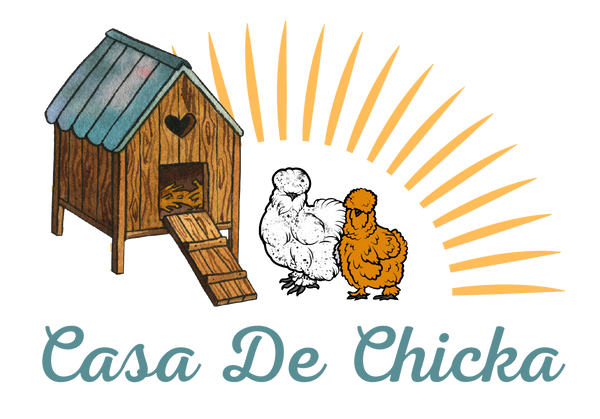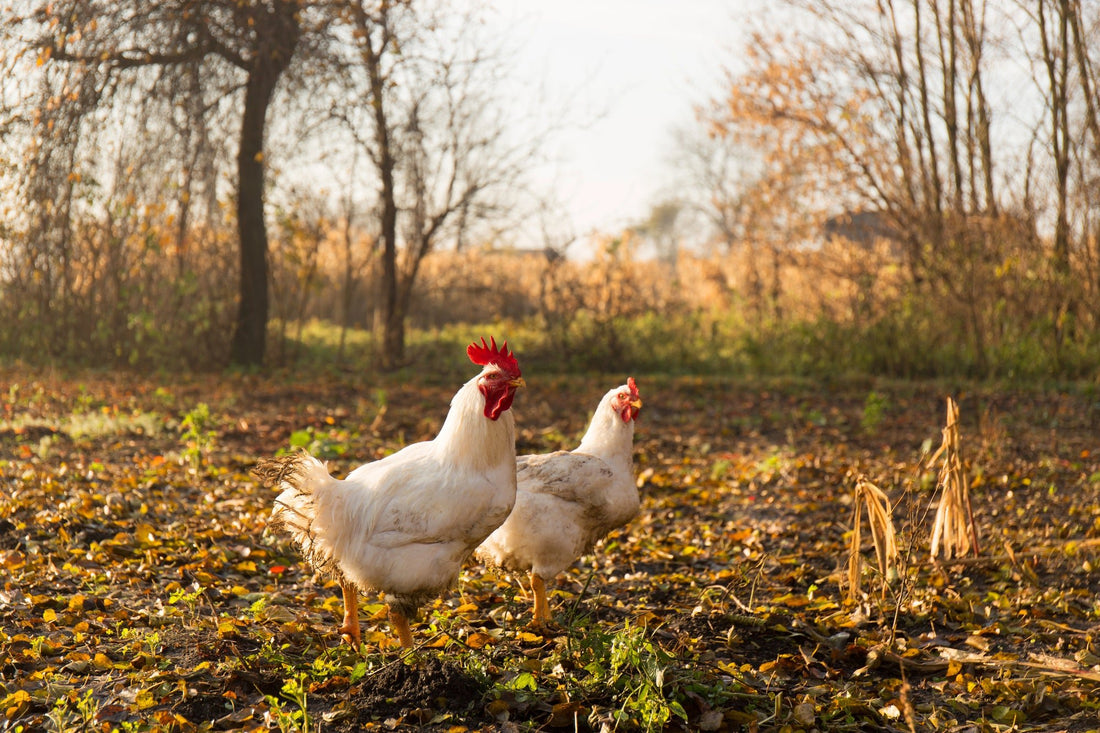As fall arrives, bringing cooler temperatures and shorter days, it’s essential for chicken keepers to adjust their flock’s care to prevent seasonal health issues. The transition from summer to fall can make chickens more susceptible to certain illnesses, especially as humidity, temperature, and light levels fluctuate. By understanding the potential health risks and implementing preventive measures, you can help your chickens stay healthy through the fall season and prepare them for the winter months ahead. In this guide, we’ll cover common chicken illnesses in the fall and provide tips on how to prevent them.
Why Fall Can Be Challenging for Chickens’ Health
Fall is a time of change, and these environmental shifts can create challenges for chickens’ immune systems. Cooler, damp weather increases the likelihood of respiratory illnesses, while the annual molt places added stress on their bodies, making them more vulnerable to infections and parasites. Additionally, the reduced daylight can affect their reproductive cycles, energy levels, and even behavior.
Understanding these factors is crucial for addressing seasonal health risks and keeping your flock healthy and comfortable.
Common Fall Illnesses in Chickens and How to Prevent Them
1. Respiratory Infections
Respiratory infections are among the most common health issues for chickens in the fall. The cooler, moist air can irritate their respiratory systems, and the increased time spent indoors makes them more susceptible to airborne pathogens.
- Symptoms: Sneezing, coughing, nasal discharge, wheezing, labored breathing, swollen eyes, or a drop in egg production.
- Common Causes: Mycoplasma gallisepticum (CRD), infectious bronchitis, and fowl cholera are common respiratory illnesses in chickens. Dust, poor ventilation, and damp conditions can exacerbate these issues.
Preventative Care Tips:
- Improve Ventilation: Ensure that the coop has good ventilation to reduce moisture buildup without causing drafts. Stagnant air increases the risk of respiratory infections.
- Maintain Clean Bedding: Regularly change bedding to keep the coop dry and free from mold, which can irritate the respiratory system.
- Limit Dust Exposure: Use low-dust bedding, like chopped straw or large flake shavings, to minimize dust in the coop.
- Isolate Sick Birds: If you notice any symptoms of respiratory illness, isolate affected chickens immediately to prevent the spread to healthy birds. Consult a veterinarian if symptoms worsen.
2. Coccidiosis
Coccidiosis is an intestinal disease caused by a parasitic protozoa, which thrives in damp, warm environments. Fall weather, with its combination of cool nights and humid days, creates ideal conditions for coccidia to multiply in bedding and soil. Chickens can contract coccidiosis from ingesting contaminated feed, water, or bedding.
- Symptoms: Bloody or watery diarrhea, lethargy, decreased appetite, ruffled feathers, and pale combs.
- Common Causes: Coccidiosis is often spread through contact with infected droppings, so crowded or unclean living conditions can heighten the risk.
Preventative Care Tips:
- Keep the Coop Clean and Dry: Regularly clean the coop and remove droppings, especially in and around the feeder and waterer.
- Rotate Pastures: If your chickens free-range, rotating them between different areas can help reduce coccidia buildup in the soil.
- Provide Coccidiostat Medicated Feed: For young chicks or flocks with a history of coccidiosis, medicated starter feed with a coccidiostat can help prevent infection. Be cautious with medications, and consult with a vet if you’re unsure.
- Offer Fresh Water and Clean Feed: Prevent contamination by cleaning waterers and feeders regularly.
3. External Parasites: Lice and Mites
As chickens spend more time indoors and huddle together for warmth, parasites like lice and mites can spread easily. These external parasites can irritate chickens’ skin, cause feather loss, and lead to anemia if left untreated.
- Symptoms: Itching, excessive preening, feather loss, scaly legs (with scaly leg mites), pale combs, and visible mites or lice in feathers.
- Common Causes: Crowded coops, damp bedding, and infrequent cleaning can increase the likelihood of lice and mite infestations.
Preventative Care Tips:
- Regularly Check for Parasites: Part feathers under the wings, around the vent, and near the tail to check for lice or mites. Look for moving specks or clumps of dirt-like material, which could be mite eggs.
- Provide Dust Baths: Chickens use dust baths to naturally control mites and lice. Set up a dust bath area with dry soil, diatomaceous earth, and sand.
- Use Poultry-Safe Insecticides if Necessary: If you find parasites, treat affected chickens and the coop with poultry-safe insecticides or dusts like diatomaceous earth. Reapply as needed, according to product instructions.
- Clean the Coop Thoroughly: Regularly sanitize the coop, perches, and nesting boxes, especially after detecting parasites. Remove and replace bedding, and treat surfaces where parasites may hide.
4. Frostbite (in Cooler Regions)
While frostbite is more common in winter, chickens in cooler regions can start experiencing frostbite on their combs and wattles with early frosts in the fall. This is especially true for breeds with large combs, like Leghorns and Andalusians, which are more susceptible to cold-related injuries.
- Symptoms: Pale or darkened tips on combs and wattles, swelling, or scabs.
- Common Causes: Exposure to freezing temperatures and moisture, especially if chickens drink cold water or get wet in rain or snow.
Preventative Care Tips:
- Insulate the Coop and Avoid Drafts: A well-insulated coop with proper ventilation can help keep chickens warm without trapping moisture. Keep the coop dry and free of drafts.
- Apply Petroleum Jelly: For chickens with large combs, applying a thin layer of petroleum jelly to combs and wattles can help protect against frostbite.
- Provide a Dry Shelter for Drinking Water: Place waterers in a dry, protected area to prevent chickens from getting wet. Consider using a heated waterer to prevent freezing.
5. Nutritional Deficiencies During Molting
Molting usually occurs in the fall and can take a toll on a chicken’s health as they regrow feathers. This process requires a lot of protein and energy, and nutritional deficiencies can make chickens more susceptible to illness.
- Symptoms: Dull, thin feathers, lethargy, and reduced egg production.
- Common Causes: Inadequate protein or calcium levels in feed can slow feather regrowth and compromise immune health.
Preventative Care Tips:
- Increase Protein Intake: Switch to a higher-protein feed (18-20%) during molting to support feather regrowth. Adding protein-rich treats like mealworms, black soldier fly larvae, or sunflower seeds can also help.
- Provide Extra Calcium: Laying hens need calcium to support egg production, but during molting, calcium is also essential for feather growth. Offer free-choice calcium supplements like oyster shells to maintain optimal levels.
- Monitor Egg Production: Reduced egg production is normal during molting, but if it doesn’t resume after molt, evaluate the diet and consult a vet if necessary.
6. Crop Issues: Sour Crop and Impacted Crop
As chickens adjust to seasonal changes in diet, such as eating more grit or switching to different feeds, they can develop crop problems. Sour crop and impacted crop are two common digestive issues, especially if chickens eat indigestible materials.
- Symptoms: Swollen or squishy crop, bad breath, lack of appetite, and lethargy.
- Common Causes: Eating large pieces of grit, spoiled feed, or ingesting fibrous materials that don’t break down easily can lead to crop issues.
Preventative Care Tips:
- Provide Grit: Grit helps chickens digest food properly, especially if they eat grains or forage. Ensure that grit is always available, especially if your chickens don’t free-range.
- Monitor the Crop in the Evening and Morning: Feel each chicken’s crop at the end of the day (it should be full) and in the morning (it should be empty). If the crop isn’t emptying, take action immediately.
- Offer Fresh, Quality Feed: Avoid giving chickens spoiled feed or table scraps with hard-to-digest materials like large vegetable pieces or fibrous stems.
Additional Fall Health Tips for Chickens
- Regularly Inspect Each Bird: Fall is a good time for monthly health checks. Look for signs of illness, injury, or parasites.
- Clean and Dry Bedding: Ensure that bedding is dry and clean, as dampness encourages mold growth and increases the risk of respiratory issues.
- Prepare for Shorter Days: As the days shorten, consider adding supplemental lighting in the coop to maintain egg production if you wish.
- Boost Immune Health: Offering occasional supplements like apple cider vinegar in water, garlic, or probiotics can help support the immune system during seasonal changes.
Conclusion
Fall is a season of transition, and with it comes specific health challenges for your flock. By being aware of common illnesses like respiratory infections, coccidiosis, and external parasites, and implementing preventive measures, you can help keep your chickens healthy and comfortable. Regular health checks, a clean and dry coop, proper nutrition, and good ventilation are all essential to preparing your flock for the cooler months. With a little extra care and attention, your chickens can thrive through the fall and be ready for the colder winter season ahead.
FAQs
1. Do chickens need a heat source in fall?
Generally, chickens do not need extra heat in the fall. They can tolerate cooler temperatures as long as they’re kept dry and draft-free.
2. How often should I clean the coop in fall?
Aim for a thorough clean every month and spot-clean weekly, especially around feeders and waterers.
3. Can chickens free-range in fall?
Yes, chickens can free-range in fall. Just ensure they have access to shelter in case of rain or temperature drops.
4. How can I tell if my chicken has mites?
Look for signs like itching, feather loss, or visible specks moving in the feathers. Regular checks, especially around the vent and under the wings, can help catch infestations early.
5. Why are my chickens’ combs pale in fall?
Pale combs can indicate anemia, parasites, or nutritional deficiencies. It’s normal for comb color to vary, but check for other symptoms if the comb is persistently pale.

